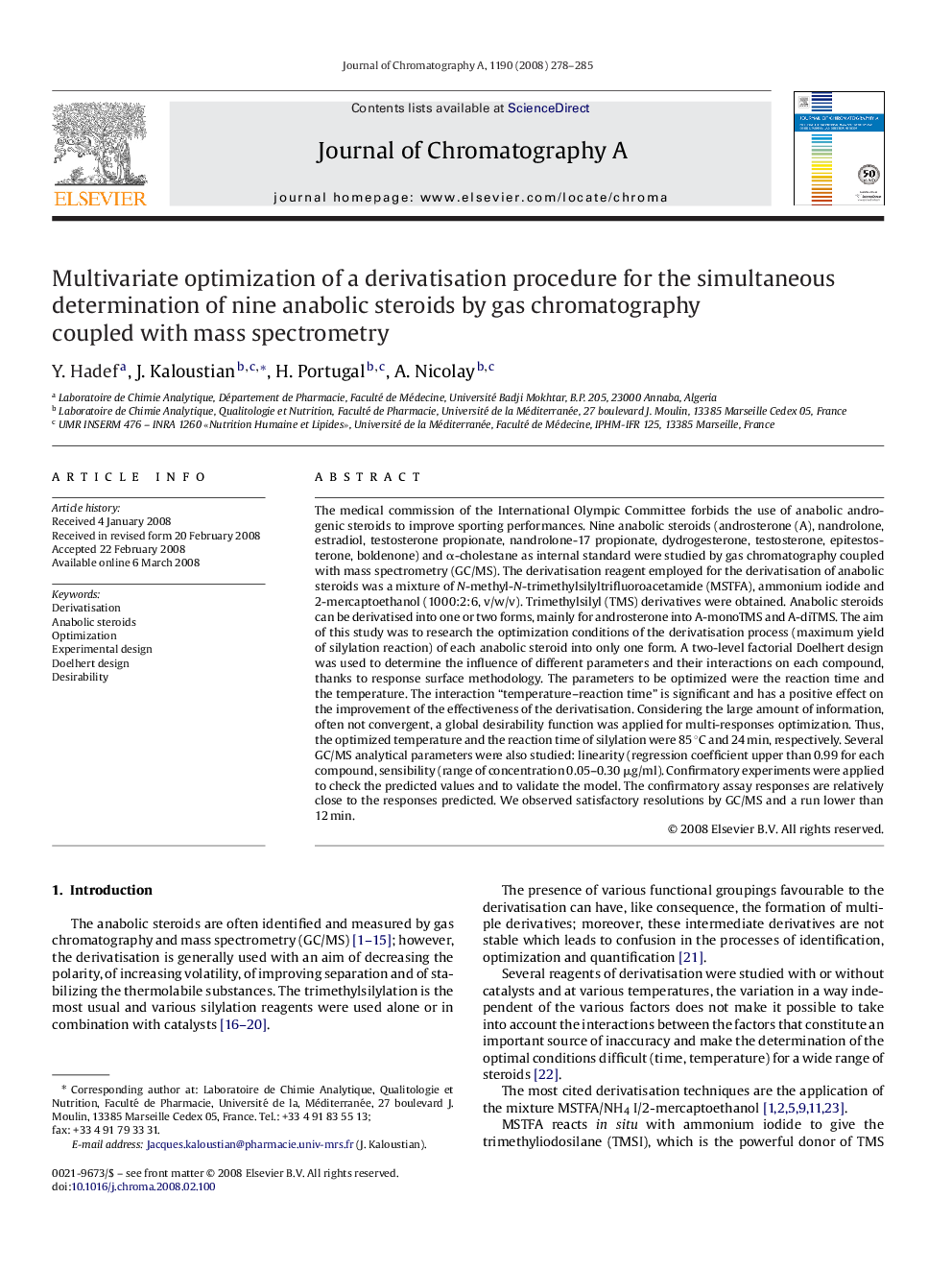| Article ID | Journal | Published Year | Pages | File Type |
|---|---|---|---|---|
| 1205694 | Journal of Chromatography A | 2008 | 8 Pages |
The medical commission of the International Olympic Committee forbids the use of anabolic androgenic steroids to improve sporting performances. Nine anabolic steroids (androsterone (A), nandrolone, estradiol, testosterone propionate, nandrolone-17 propionate, dydrogesterone, testosterone, epitestosterone, boldenone) and α-cholestane as internal standard were studied by gas chromatography coupled with mass spectrometry (GC/MS). The derivatisation reagent employed for the derivatisation of anabolic steroids was a mixture of N-methyl-N-trimethylsilyltrifluoroacetamide (MSTFA), ammonium iodide and 2-mercaptoethanol (1000:2:6, v/w/v). Trimethylsilyl (TMS) derivatives were obtained. Anabolic steroids can be derivatised into one or two forms, mainly for androsterone into A-monoTMS and A-diTMS. The aim of this study was to research the optimization conditions of the derivatisation process (maximum yield of silylation reaction) of each anabolic steroid into only one form. A two-level factorial Doelhert design was used to determine the influence of different parameters and their interactions on each compound, thanks to response surface methodology. The parameters to be optimized were the reaction time and the temperature. The interaction “temperature–reaction time” is significant and has a positive effect on the improvement of the effectiveness of the derivatisation. Considering the large amount of information, often not convergent, a global desirability function was applied for multi-responses optimization. Thus, the optimized temperature and the reaction time of silylation were 85 °C and 24 min, respectively. Several GC/MS analytical parameters were also studied: linearity (regression coefficient upper than 0.99 for each compound, sensibility (range of concentration 0.05–0.30 μg/ml). Confirmatory experiments were applied to check the predicted values and to validate the model. The confirmatory assay responses are relatively close to the responses predicted. We observed satisfactory resolutions by GC/MS and a run lower than 12 min.
